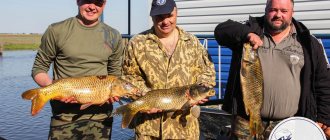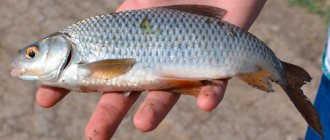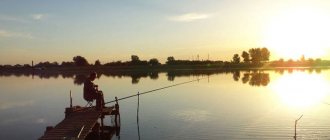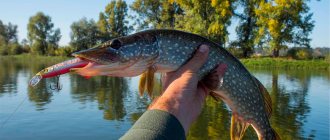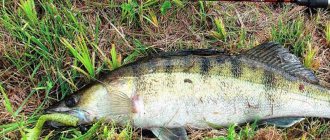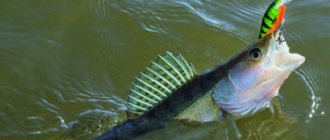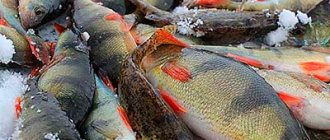Yuri 07/19/2020 314
Summer fishing in the Lower Volga is specific in its own way. Before deciding on the gear, we choose the fish that we are going to catch on Nizhnyaya Akhtuba. The fish of the Volga-Akhtuba floodplain are characterized by their habits. Fishing equipment includes not only spinning rods, fishing rods, bait reels, etc., but also other significant gear:
- We examine the water area using an echo sounder if there is no ranger base nearby;
- Fishing must necessarily be accompanied by the help of a landing net or hook;
- We use a gaper in order not to injure the fish when removing the bait from the mouth;
- Polishing glasses are necessary to prevent glare from the surface of the bottom if we use a wobbler as bait;
- At night, be sure to take a flashlight with you;
- For peaceful white fish, we stock up on a fish tank and a comfortable chair;
- In areas of the Lower Volga it is almost impossible to get bait in the form of a worm or maggot - we stock up on bait.
We offer you to take a closer look at the selection of necessary gear when fishing for catfish, asp and other freshwater fish in Astrakhan reservoirs.
Upper, Middle and Lower Volga. Review of the best places
Based on the fact that the length of the river exceeds 3.5 thousand kilometers, it is not strange that the reservoir is conventionally divided into three parts - the Upper, Middle and Lower Volga.
Thus, each of the indicated geographical parts of the river is rich in a variety of species and species of fish, which, by the way, can be caught completely free of charge, since the river is not considered a private one.
And if it’s easy to find a free place by settling down “wherever you look,” then finding an inexpensive but comfortable fishing base is much more difficult.
Fishing base "Barm Fishing" (Upper)
This base is located in the Nizhny Novgorod region, near the village of Barmino. Here you can live, rent a motor boat, gear, and barbecue.
The price of one day's stay includes free three meals a day, as well as use of billiards and a Russian bath.
As for the pricing policy, compared to other similar fish farms, BarmFishing allows its clients to enjoy their favorite fishing at a very reasonable price.
- Accommodation:
- Adult – 1700 rubles (day);
- Children (up to 7 years old) – 850 rubles (day);
- Children (under 3 years old) – free;
- Boat rental:
- Without motor – 500 rubles;
- Motor boat – from 1500 to 2700 rubles;
- Additional services:
- Smoking fish – 500 rubles;
- Renting a regular float rod – 100 rubles;
- Spinning rod rental (12 hours) – 250 rubles;
Fishing base "Udacha" (Medium)
The Middle Volga includes an abundance of various species of fish, which you can catch completely free of charge as part of your stay at the Udacha recreation center.
The range of services provided may surprise even an avid fisherman: high-speed motor boats, modern and high-quality repairs, entertainment for children, rental of fishing gear, cleaning and smoking fish with the possibility of taking it outside the base (home).
The prices, it must be admitted, are respectable, but quite justified, as confirmed by a lot of reviews from satisfied and satisfied fishing citizens.
- Accommodation:
- Cottage for two adults (for 4 people) – 3 thousand rubles (day);
- Children under 6 years old can stay with their parents completely free of charge (extra bed is not provided);
- The actual process of fishing and the use of gear is completely free;
Fishing base "Astra" (Nizhnyaya)
This fish farm is popular among the average class of citizens, since the prices for accommodation and fishing are more than acceptable, for some they may even seem low.
Finding the Astra base is very simple, just get to the village of Uspekh (Kamyzyaksky district), near which the fish farm is located.
The prices, as stated, are quite low, so in order to spend the night on the territory of the base, you need to make an appointment in advance by phone, since there are a lot of people who want to relax economically:
- Accommodation:
- Summer house with air conditioning and refrigerator – 600 rubles per adult (there are no amenities in the house);
- “The Fisherman’s House” can accommodate a company of 10 people - 850 rubles per citizen per night (with amenities);
- Luxury class house - 1200 rubles per person (good repairs and amenities in the house);
- Additional services for which you will need to pay extra (price is negotiable):
- Tennis;
- Sauna;
- Connection;
- Banqueting hall;
- Fishing gear rental:
- Fishing rods;
- Spinning rods;
- Floats, hooks, weights, bait (must be purchased);
Features of fishing on the Volga
Anyone can go fishing on the Volga, however, gear and high spirits will not be enough - you will need to choose the right place for fishing and, of course, the period, because every fisherman knows that seasonality plays a big role in the fishing process and affects the size and quantity of the catch .
Choosing a fishing spot
In order for the fishing process to bring maximum pleasure and much-desired prey, you need to take a responsible approach to choosing a place for fishing, and, by the way, it is recommended to choose it based on the following criteria:
- A mule is a good sign; in hot weather, fish hide in it;
- Reed is the fisherman’s “enemy”; the fishing line often gets tangled in it and the hook gets caught in it, but at the same time, it is in the reeds that the most fish are concentrated, especially in summer;
- Looking around the river bank, you can see a “trodden” or specially equipped place for fishing (by how neatly and neatly it is made, one can conclude: would a fisherman bother if there was no bite in this place?);
Seasonality
Fishing on the river, based on thousands of reviews, has its own characteristics that arise and change with the time of year:
- In spring and autumn, it is recommended to fish from the shore, both with a regular float rod and with a spinning rod, but you should cast a hook not far from the shore, especially if there are reeds and a lot of algae next to it, in which fish hide in the heat;
- In the fall, it is also recommended to fish from the shore, since this is the “scheme” that is the most fruitful in the end, however, in this case, you should throw the hook at least 10 meters from the shore (you can fish from a boat or from the shore, but with a spinning rod);
- There is not much that can be said about the winter period, the usual scheme is: drill a hole, throw bait and wait for the catch (as for the ice, fishermen assure that in winter it is very thick and strong);
How to catch carp on the Volga with a feeder - from gear to fishing
Carp is not only a beautiful, tasty and large fish. As previously written, this is a very careful, strong and fast fish. It is possible to catch it with a regular float rod, but it is very difficult and, most likely, your line will break for several reasons.
More and more often, experienced fishermen use a feeder or an English donka to catch carp. In this article you will learn about the features of catching carp on a feeder specifically on the Volga: you will get acquainted with the carp fishing technique, feeder equipment, and other features.
After catfish, carp is second on the list of the most attractive fish for those who come to fish on the Volga. The process of catching fish will give you great pleasure, so the gear must be strong and reliable.
Best option:
- Feeder rod Team Salmo ENERGY Feeder, length 3.9, test 120-250 g
- Daiwa Black Widow carp reel from our rating of the best Daiwa spinning reels.
- Salmo monofilament line, Feeder series. Thickness 0.3-0.4 depending on the expected trophy.
- Carp hooks Owner.
Feeder rod. Many fishermen, and some of them are experienced ones, make the same mistake - they choose the same feeder rod for different fishing conditions. When choosing gear, you should take into account the natural conditions in which you will be fishing and the fish you want to catch.
If we talk about fishing for carp on the Volga in the lower and middle reaches, at medium and long distances, then the feeder rod should be of the medium, heavy or super-heavy power class and at least 3.9 meters long. Very rarely, in places with weak currents, at short distances a short rod (2.7 - 3.3 m) of a light power class will be more effective.
Coil. When choosing a reel, pay attention first of all to the spool diameter and gear ratio. These indicators should be quite high. They will provide you with quick unwinding of the gear. In general, for fishing on such a fast river as the Volga, experienced fishermen use a free-running reel. The functions of the reel will allow you to rewind a little fishing line, which will go under the water, forming an arc, which will prevent the load from being torn off from the bottom by the force of the current.
Fishing line. Here the opinion of fishermen is divided:
- Some people prefer wicker. It does not stretch, bites are very clearly visible. Prevents the fish from going into snags. But the disadvantage is that it rubs against stones and snags. Although we recommend fishing lines with a high-class hardening coating, for example Salmo Elite Braid 0.2-0.24 .
- Another part of the fishermen prefers high-quality monofilament fishing line - it stretches a little, which makes it possible to additionally dampen the jerks of strong carp. Less rubbing on stones. The disadvantage is that it is a little thicker and stiffer, which affects the casting distance. Also, it still stretches, which requires the fisherman to fish with constant retreat back along the shore in order to prevent the carp from going into the snags. We recommend Salmo Specialist Feeder 0.3-0.4 mm
.
Replaceable tip (quivertip). Here you also need to take into account the natural features of fishing. For fishing in strong currents, it is necessary to install rigid tips. However, there shouldn’t be any problems with this; any feeder or carp rod, even a budget class one, has interchangeable tips.
A shock leader is a piece of monofilament, 6-10 m long, tied to the main fishing line. It is used when they want to avoid shooting equipment when using heavy loads and feeders. The correct knot for a shock leader is described here.
Leadcore is another important component of carp equipment, especially important when fishing on stones or snags. Leadcore will prevent the fishing line from rubbing on the stones and will submerge the equipment so as not to arouse suspicion in the carp of the presence of foreign bodies in the form of a stretched fishing line.
Carp is a wild carp and lives in running water. Here it is impossible to feed with boilies, as we did when fishing for carp in still water. We will stick to the feeder type of fishing, but with elements of carp equipment.
List of feeder rigs that are well suited for current:
The most popular equipment for feeder fishing in the current is a helicopter and two knots, but in this case it is not very suitable due to the very passive and wait-and-see type of fishing, as well as the use of heavy baits (for example, boilies). You can try, but you should understand that this equipment is good for strong currents and bait floating above the surface of the bottom (the bait for this should be light).
We will choose an asymmetrical loop or paternoster. The first is good for self-hooking fish and further trouble-free fishing, the second is very sensitive and will show the slightest touch of the carp, you will have to hook when a significant stretch of 10 cm appears.
Feeder bait is either made independently or purchased in stores. We have already written a detailed guide about mixtures and techniques for feeding carp.
We recommend combining homemade bait with store-bought bait for two reasons:
- Store-bought bait contains very active flavoring additives, which will attract carp downstream from distant sites. Also, many professional baits from the Trapper and Dunaev series contain bite activators, which help improve the digestion of wild carp.
- Homemade bait, in turn, is nutritious and rich in natural carbohydrates and proteins. Having tried this bait, the carp will not refuse the table and will continue to feed for a long time.
Be sure to add an animal component to the bait. In cold water it is 1/3 of the total bait, in warm water in the summer it is 1/10 or 1/15 of the total bait. If you try for a worm, then feed it with chopped worms. The vegetable component of the bait should also be in the bait - corn, green peas, pearl barley, boilies.
In the southern regions of the Volga, carp are fed with the inclusion of shell meat in the bait. To do this, take out the pulp, chop it finely, and add shell shells.
You can make bait based on semolina. Take sunflower cake, mix with breadcrumbs, mixed feed, semolina and lightly steamed oatmeal.
When fishing in medium and fast currents, wheat bran is added to the bait (preferably unevenly ground). By dissolving in water, particles of such bait will create turbidity, which is attractive to carp. Wheat bran is steamed for a long time over low heat.
- Be sure to use feeders from 120 g. This way you will ensure that the bottom reaches the bottom as quickly as possible in the place where you threw it.
- When feeding and when catching, use feeders of the same weight and aerodynamic shape. Otherwise, you will feed in one place and try to catch the carp in another.
- Cast a little higher upstream so that the feeder hits the bottom exactly perpendicular to the bank from you.
Over 7 years of active fishing, I have found dozens of ways to improve the bite. Here are the most effective ones:
- Bite activator . This pheromone additive attracts fish most strongly in cold and warm water. Discussion of the bite activator “Hungry Fish”.
- Increased gear sensitivity. Read the appropriate manuals for your specific type of gear.
- Pheromone -based lures .
Boilies are an excellent bait for carp due to their size, choice of flavoring and aromatic properties and color.
Depending on the activity of the carp and the frequency of bites of small fish, it is customary to use the following attachments:
- In autumn, when fish activity is low, use one sinking boilie with a diameter of 18 mm on a hook.
- In summer - 1-2 boilies with a diameter of 24 mm.
- Fishmeal boilies work better in the summer, when the water begins to warm up and shellfish multiply.
- It happens that the carp experiences mood changes during the day. So, in the second half, with the onset of heat, experienced fishermen recommend replacing fruit boilies with fish ones.
- In strong currents, flavors are quickly washed out. Therefore, it is necessary to soak the nozzles in them for at least 2–3 hours.
What to fish for on the Volga?
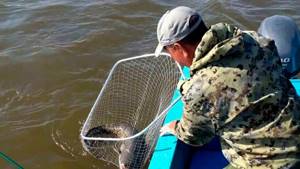
As stated, one of the keys to a good time during the long-awaited fishing trip is the correct selection of gear and bait. What you should pay attention to when preparing for fishing will be discussed below.
Gear overview
Gear is the thing without which fishing loses its meaning and essence, so when choosing it you need to be extremely careful and scrupulous.
For the attention of the reader, the main characteristics of fishing gear on the Volga:
- Spinning rod (from 2.5 to 4 meters in length);
- Reel (it is recommended to buy a spinning reel);
- When buying fishing line, you should pay attention to monofilament;
- Lures (artificial):
- Jig heads (weighing up to 60 grams);
- Wobblers (with a depth of up to 6 meters no more);
Lures and bait
According to reviews from many fishermen, the most effective baits are wobblers, the purchase of which should be based on the time of year, because the color greatly affects the effectiveness of the bait.
Foam rubber fish and fish with vibrating tails are no less in demand on the fishing market.
What to fish with on the Volga: Tackle and bait for fishing on the Volga
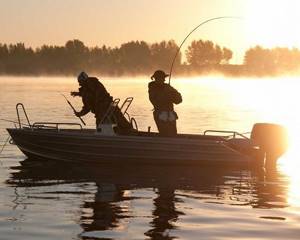
What to fish with on the Volga, how to fish on the Volga, what baits to use when fishing on the Volga. Such questions are asked only by those fishermen who have not yet been fishing in the Astrakhan region. From the article, anglers will learn what kind of fish can be caught on the Volga in the summer, what gear to use for catching catfish, carp, pike perch, asp and other fish. We will tell you which rod to choose for fishing on the Volga, what reel you will need, help you decide on the choice of fishing line and reveal the secret of which lures work best when fishing on the Volga.
Tackle for catching roach
Since the roach is an omnivore, it can be caught using almost any attachment and bait.
Basic gear for catching roach both in Astrakhan and the Lower Volga:
- float rod,
- feeder,
- bottom devices.
Local residents sometimes catch roach on a stone with a fishing line.
The gear for catching roach in April on the Lower Volga consists of a 100 gram weight and two leashes with hooks. The bait is the simplest - a red worm. There is plenty of it in local markets and in the soil. At the market, a can of worms will cost pennies.
Fish are also caught using twister tails, and the most experienced fish are caught using pieces of shrimp.
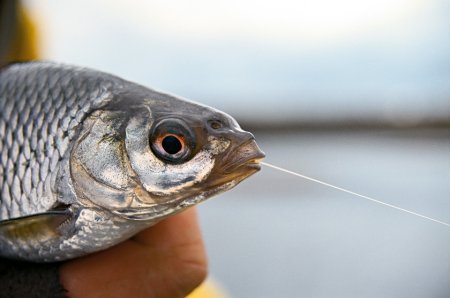
What the roach bites on:
- on dung worms,
- maggots,
- canned corn.
Use the same bait for roach as for roach or bream. Any porridge, halva, or mixed feed will do. Add bait to the bait: chopped maggots or worms, cornmeal, etc.
Where to catch roach in the Lower Volga in April and May
Local residents prefer fishing in shallow waters; they can fish from morning until late at night. You can plan your fishing for before noon. If you use two or more donkeys, then you will have to pull out the fish so often that you will have no time to sit down.
At the beginning of the fishing season, the roach moves in the depths, and it is impossible to reach it with a fishing rod. To make it easier, not only fans of this tackle catch roach on a feeder (English donkey).
Donka is a special tackle that is attached to a long fishing line with several hooks. In mid-April, the fish are actively biting, and within a few seconds after casting the feeder (donka), the roach is hooked.
What to fish with on the Volga
In the summer, many fishermen dream of going fishing on the Volga. There are many reasons for this, because legends about trophy catches on the Volga have been circulating in the fishing community for a long time. Of course, fishing on the Volga is good: there is a bite and the fish are solid, but you shouldn’t expect that a bare hook will bite. Fishermen should understand that fishing has its own specifics depending on the region. Let's try to decide what to fish on the Volga with, how to fish on the Volga and what gear you will need for fishing on the Volga. We have already set the Fisherman's Calendar on the Volga and Akhtuba for June, July, August, in order to understand which fish will be caught better than others in the summer on the Volga (green - the fish bites well, yellow - the fish bites poorly, red - the fish does not bite).
Fishing gear on the Volga
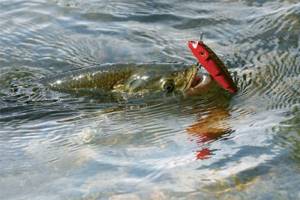
From the angler's calendar it is clear that in the summer the roach does not bite eagerly, and pike and pike perch are also capricious. The rest of the fish are ready to pay attention to your fishing gear. This means that fishing gear on the Volga must be selected based on what kind of fish you are going to catch. As a rule, the choice of gear for fishing for a particular fish differs in the length of the rod, rod action, multiplier reel, spinning reel, etc., braided or monofilament fishing line of different diameters, baits used: wobblers, poppers, foam rubber, spinners, etc. . Let's figure out what gear is needed for fishing on the Volga for asp, what gear to catch catfish on the Volga, how to choose gear for fishing for carp, and also what gear for catching pike and pike perch to use when fishing on the Volga.
What does the tackle for catching carp consist of?
Tackle for catching carp consists of:
- Rods. The fishing rod must be strong to withstand the pressure of even large prey. A length of up to 3.5 m will be optimal for long casts.
- Fishing lines – 0.5 mm;
- Capacious reel;
- Sinkers up to 125 g;
- Feeders. For standing water, a plastic feeder is suitable, for medium flows - lead, for strong flows - steel.
- Cord leash;
- Durable hook for carp;
- Carbine.
To increase the sensitivity of the gear, you can use a sliding feeder. The fishing line must be passed through a copper tube installed on the spring axis. A carabiner with 4 wires is attached to the end of the fishing line.

As a leash, you can use a braided thread with a diameter of 0.5 mm. The braid becomes softer every time, however, the strength does not decrease even after long fishing. The thread does not fray and does not alarm the carp.
When going fishing in Astrakhan, you can rent almost any gear at the Sazanya Bukhta base.
Float fishing rod
Suitable for weak currents, for fishing both from the shore and from a boat. Relevant rods for carp are 6 m or spinning rods up to 3 m.
A short rod is suitable for fishing from a boat, and a long rod is suitable for shore fishing.
The rod includes the following components:
- Spinning reel;
- Sinker;
- Sliding float;
- Hook depending on the prey (for large varieties, numbers 5 or 7 are suitable);
- Durable fishing line.
Donka
Bottom equipment involves catching carp without a rod. This way you can feed the fish at the bottom. Suitable for hunting from an inflatable boat.
Elements:
- Line up to 55 m;
- Leash up to 35 m;
- Powerful coil;
- Sinkers, depending on the current (with strong - up to 100 g, with weak - up to 70 g);
- Carp hook.
To begin with, the coil is inserted into the holder and secured with a nut. The fishing line is attached to the spool with a knotted loop. The end of the fishing line is passed through the rings of the spinning rod. At the end, the fishing line is wound onto a reel and the bracket is closed.
It is necessary to fix the feeder on the fishing line itself; another knotted loop is made at the end, onto which the leash is attached. Hooks are attached to the leashes.
Feeder
Feeder gear differs from bottom gear by the presence of tips that warn of a bite. Components of the tackle:
- Rod with a soft tip up to 4 m long;
- Powerful reel with two clutches;
- Strong fishing line 0.5 mm, at least 150 cm long;
- Leash up to 0.2 mm;
- The feeder is a sinker, so its weight must be at least 120 grams;
- Short hook.
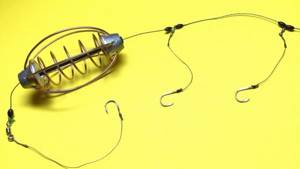
Feeder equipment for carp
Makushatnik
Unlike the bottom equipment, the top rig uses a metal plate instead of a feeder, to which leashes with hooks are attached. Tackle elements:
- Sinker up to 100 g;
- Strong fishing line 0.5 mm;
- Hooks No. 8;
- A metal plate the size of a matchbox.
The cake is attached to the plate, as well as the hooks, disguised with bread and covered with clay. This design is very sensitive to any movements, so a bite can be detected instantly.
There is a wide variety of gear for catching pike perch, the choice depends only on the fisherman. However, it is important to understand that carp is a large fish, so the main thing is that the equipment is strong and can withstand the pressure of even trophy specimens.
TAGS:
How to catch asp on the Volga
Tackle for asp
Tackle for catching asp should be selected based on the behavioral characteristics of this fish. Asp is a very cautious fish and catching asp on the Volga occurs with the help of long casting. It follows from this that the best tackle for catching asp on the Volga will be a spinning rod with a rod length of 3 to 3.3 meters. The action of the gear for asp is preferable from medium to medium-fast, the test of the cast bait is from 10 to 35 g. A monofilament line with a diameter of approximately 0.2-0.22 mm is suitable for catching asp on the Volga, but if you are a fan of braided line, then use braided line with a diameter of up to 0.13 mm. The tackle for an asp definitely needs to be set up and the clutch adjusted, since the asp behaves actively when fishing. As for the reel, a spinning reel of the 3000-3500 series from Daiwa and Shimano is suitable. When choosing gear for asp fishing, keep in mind that the asp often bites when the bait is retrieved super-fast, so pay attention to the high gear ratio of the asp reel.
The best baits for catching asp on the Volga
The best lures for asp fishing on the Volga are Kastmasters weighing from 14 to 27 grams; color can affect the bite; it is preferable to use wobblers with an orange or blue stripe for asp fishing on the Volga. The asp bites on spoons, jigs, and rotating spoons. The best bait for asp when fishing on boilers is surface wobblers.
Tackle for asp
The asp acts as a cautious fish, requiring long casts to catch. We stock up on a spinning rod up to 3.3 m long with a bait test of 10-35 g. We choose a braided diameter of 0.13 mm or a monofilament line of 0.2 -0.22 mm. A well-adjusted clutch allows you to catch an asp weighing up to 4.5 kg on such a fishing line. For the reel we choose the inertia-free model 3000-3500. Ultra-fast retrieval of the bait is a prerequisite for catching asp, which is why a reel with a high gear ratio is required.
As bait we choose an orange cut or a blue stripe. In addition, we use jigs, rotating spoons and small, elongated, weighty spoons.
What to use to catch catfish on the Volga
Catfish fishing gear
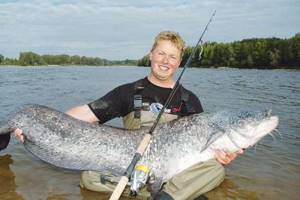
Catching catfish while fishing on the Volga is the dream of every fisherman. This Volga giant needs special gear to catch it. If you plan to catch catfish with a spinning rod from a boat, then you will need a rod with a fast action and a length of 2.4-2.7 m, a weight test of 40-80 or 50-100 g. A braid with a diameter of 0.2–0.3 mm will allow you to avoid breakage if you need to force fishing.
A spinning rod for catching catfish must be equipped with a Shimano Tecota 500 class multiplier reel. The equipment for catching catfish with a spinning rod can be used with a jig.
It is excellent to catch catfish when fishing on the Volga by trolling. Here, however, one should distinguish between deep-sea trolling for catfish in pits and riverbed edges; and shallow-water trolling for catfish on the rifts, where catfish come out in the second half of summer to hunt for saberfish. You can also catch catfish while fishing on the Volga in a plumb line, using a short, powerful rod up to 2.1 m long with a cast of 100 g, which should be equipped with a powerful multiplier reel.
The best baits for catching catfish on the Volga
The best lures for catching catfish by trolling in deep areas are Storm Deep Thunder wobblers with a length of 11 to 15 cm (immersion depth 5.5 - 9 meters), floating wobblers MANN'S and Halco (immersion depth 7 to 9 meters) are also suitable. Wobblers for catfish for depths from 10 to 13 m are MANN'S and RIVER 2 SEA class 30+. Fishing for catfish in July-August on shallow reaches and riffles will require the use of wobblers with a diving depth of 1.5 to 2.5 meters, as an option - the universal wobbler Storm Hot'n Tot, suitable for catching any predatory fish on the Volga.
In principle, to catch catfish on the Volga in shallow water, you can use any floating wobbler equipped with a rattle and reliable tees. Catching catfish on the Volga with a jig involves using a sinker head weighing from 40 to 80 grams to feel the retrieve and the bait touching the bottom, since catfish fishing is done in holes and at great depths with a noticeable current. It is better to catch catfish using such baits as: large vibrating tails, large twisters, foam fish up to 15 cm long. It is extremely important when catching catfish to use a metal leash so that the brush made of catfish teeth does not fray the braid during long-term fishing. Remember, the main thing when catching catfish on the Volga is the strength of all elements of fishing gear.
Tackle for catfish
When fishing for catfish in the Lower Volga we use durable gear. A spinning rod of 2.4-2.7 m with a dough of 50-80 g is perfect for a boat. We use 0.2-0.3 mm braid as fishing line so as not to break off the prey during forced fishing. We choose a reliable multiplier reel, for example, from Shimano. To catch catfish using a spinning rod, jig tackle or trolling is used. To catch catfish in a plumb line, we select a short rod with a powerful base up to 2.1 m long, and the test for it is 100g.
When fishing by trolling, we use wobblers 10-14 cm long with a diving depth of up to 5.5 m or up to 9.5 m. If we are in areas with great depths, we choose a wobbler with a working depth of up to 13 m. Almost any predatory fish in the Lower Volga is excellent The Storm Hot'n Tot wobbler is caught.
Jig fishing involves the presence of sinker heads up to 80g. This is due to fishing at great depths and currents. A light head will not allow you to feel the touch of the bottom and the wiring itself. As bait we use a large vibrating tail, as well as twisters up to 15 cm long.
When we go fishing for catfish, we make sure to equip the tackle with a metal leash so that the catfish’s teeth do not rub the braid. Durable swivels and fasteners in the lower reaches of the Volga are an integral part of the equipment for fishing in the lower reaches of the Volga.
What to use to catch carp on the Volga
Tackle for catching carp
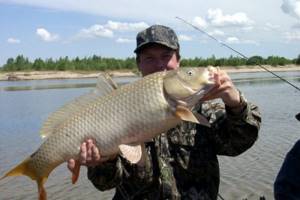
Fishing for carp, a strong and cunning fish, is always a struggle. Fishing for carp brings a lot of thrills, so the tackle should be as reliable as possible. Professionals use carp fishing gear for carp fishing: carp rods, carp reels and a stand with an electric bite alarm. Of course, gear for carp is expensive, so if you really want to try to catch carp, then a converted spinning rod with a dough of 40-80 grams and a length of 2.7-3.3 meters is suitable for catching carp on bottom gear.
It is advisable to use a reel for carp from Shimano with a Bait Runner system of the 6000-10000 series, but you can also get by with Daiwa reels of the 4000-5000 series. For carp, a braided line with a diameter of 0.2-0.3 mm is preferable, but monofilament with a diameter of 0.4-0.5 mm can also be used. Monofilament line fends off jerks much better when fishing for carp. Also, for fishing for carp on the Volga, you will need weighty sinkers for bottom equipment and durable hooks for catching carp weighing from 4 kg.
The best baits for catching carp on the Volga
The best baits for carp are boilies and barley shell meat. To improve the bite when fishing for carp on the Volga, you can use carp bait.
Tackle for carp
Tackle for fishing for carp - a boat rod with a length of 2.1 to 2.4 m. Test - from 100 to 150g. It can be a carbon fiber, composite or fiberglass rod. We choose a powerful spinning reel or multiplier at your discretion. For fishing line, we select monofilament with a diameter of 0.36 - 0.6 mm or braided fishing line with a diameter of 0.3 to 0.4 mm. Be sure to use a sliding sinker weighing from 80 to 150g. He buys carp types as hooks for attaching corn, boilies, and shells. Since carp fishing in Astrakhan is carried out from a boat, be sure to take a large landing net with you.
How to catch pike perch on the Volga
Tackle for catching pike perch with jig
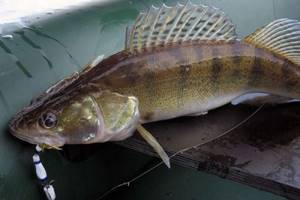
Fishing on the Volga for pike perch is one of the most exciting, especially since the methods of catching pike perch are varied. Let's figure out what gear is needed for fishing for pike perch.
To catch pike perch with a jig, you will need a fast rod 2.7-3 m long with a cast of 15-40 or 20-50 g. The main weight of jig heads for catching pike perch on riverbed edges and dumps is in the range from 35 to 50 grams. As for catching other predatory fish on the Volga, for fishing for pike perch it is better to use braided fishing line with a diameter of 0.15-0.19 mm. A reel for pike perch would be appropriate from the 3000-3500 series from Shimano or Daiwa. This condition will allow you to combine fishing for pike perch with fishing for small catfish on the Volga.
The best baits for catching pike perch on the Volga
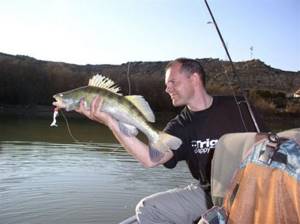
The best baits for pike perch on the Volga are foam rubber fish, vibrotails and twisters equipped with doubles or tees.
The preferred bait color for pike perch is green and fluorescent green. It takes pike perch well and baits of orange and yellow shades.
If you plan to catch pike perch in snags, choose foam rubber with hooks pressed tightly to the body or twisters on an offset hook with a recessed sting as bait. The pike perch has a hard mouth, so when biting it easily breaks through the silicone, exposing the hook tip.
Tackle for zander
Tackle for fishing for pike perch - a spinning rod, the optimal length of which is from 2.4 to 3 m. The spinning test is determined depending on what kind of bait we use. If we use heavy jig heads, which are especially good in the current, or Cheburashkas weighing 45-50 grams, then accordingly we select the spinning test a little higher. Average power of a multiplier or inertia-free reel. Here we pay attention to the choice of braiding, the diameter of which should not go beyond 0.18-0.22 mm.
How to catch pike perch on the Volga
Tackle for catching pike perch by trolling, catching pike perch on the track
The gear for catching pike perch by trolling as pike perch on the Volga is almost identical to the gear for catching catfish with a spinning rod, so the recommendations for spinning rod, reel, fishing line and wobblers are similar to those we gave above in relation to catching catfish.
The best baits for catching pike perch on the Volga
The best lures for catching pike perch by trolling on the Volga are wobblers of various colors, depending on the time of year chosen for fishing on the Volga:
- in the spring, pike perch are caught using wobblers with a natural color that imitates carp fish - a dark back, a white belly and silvery sides;
- In summer, pike perch are perfectly caught using wobblers of greenish shades, for example: plain green and green with transverse stripes for perch. Another universal option is the coloring of the Red Head wobbler - red head, white body. In addition to pike perch, pike are excellent fish for this coloration.
With a wobbler up to 15 cm long you can catch a luxurious trophy specimen of pike perch on the Volga. For catching pike perch at a depth of 10-13 meters, wobblers from MANN'S Magnum Stretch 30+ and RIVER2SEA downsider minnow 200f are suitable. But just in case, take slightly smaller wobblers with an elongated shape when fishing. In some cases, biting on a smaller wobbler turns out to be more interesting. Also, for fishing on the Volga, it is recommended to use wobblers from the manufacturer Halco, which are used not only by pike perch, but also by catfish.
Predator on the Volga
Catching a predator on the Volga
They catch the predator with a spinning rod, a donkey or a feeder. They fish from a boat with live bait, using several rods at the same time. The fishing process is not particularly active: tackle is thrown in different directions, after which all that remains is to wait for the bite. Despite this, such fishing is very entertaining and interesting. Catching a predator in the evening is usually more successful than in the morning, so we arrive at the place around three in the afternoon. The most active bite occurs from five in the evening until sunset. Pike-perch takes bait even after sunset, in pitch darkness, but at night it is dangerous to catch a predator from a boat, and it is prohibited on navigable rivers.
On the river bed
We open the fishing season in June, immediately after the end of the spring ban. At this time, the predator can be in different places of the reservoir, and in order to detect it, you have to fish all promising points. This is easy to do with a motorboat. As a rule, we start searching for pike perch on the main bed of the Volga , on the right side of the fairway. In June, optimal feeding conditions are created here for predators: after spawning, white fish are still at depth for some time, as evidenced by the good catches for donk in these places. In addition, the springs with which the right bank of the Volga attract many fry. The bottom of the riverbed is predominantly rocky and pebble - just what pike perch and bersh prefer.
On the main bed of the Volga, the depth increases sharply, and the bottom topography is varied. The bottom goes deep into steep slopes, “steps”, therefore, by throwing equipment in different directions, it is possible to fish different depths from one place. We place the boat above a depth of 10-12 m; the depth difference between the extreme rigs is 6-17 m. As a rule, in the early evening bites occur at a depth exceeding 10 m, but by sunset the pike perch comes closer to the shore, so bites become more frequent on rigs located at a depth of 7-8 m. Sometimes already In the pitch darkness, stranded, he manages to catch a large fanged predator.
Rocky ridges of the bedrock channel are used as “hunting grounds” by pike, which are found quite often on the right side of the Volga fairway, and catfish bites sometimes occur at great depths. The best places for catching pike perch on the right side of the riverbed are rocky bottom elevations. At a distance of about 60 m from the shore, the depth above the elevation reaches 10 m, then downstream it gradually decreases to 7 m, and further down it gradually increases again to 12 m. The elevation is about 50 m wide. Most bites occur on the lower slope. Here the boat is placed at 8 m, and the rigs are thrown into the depths. The upper slope, where the bottom becomes shallow, is usually less catchable. If the lower slope is occupied by someone, then behind the rise the boat is placed at a depth of about 10 m, and the equipment is thrown aground. Fishing on the main riverbed is attractive because it takes place in close proximity to the right steep bank of the Volga, which reliably protects from the wind. At a distance of less than 100 m from the shore, depths reach 10 m or more. Even if the wind blows along the river, its influence here weakens: the wave goes gently, rolling forward, without interfering with fishing at all.
On the meadow side
In July, schools of pike perch and bersh, following white fish, move to the shallower meadow side of the riverbed. Here fishing is carried out at depths of 13-14 m. The depth of 14 m directly borders the fairway. If you stand on the stretch at this point, the ships will pass at a distance of less than 100 m from the boat, which feels like “pretty close” on the water. You need to stand close to the fairway, because before sunset, pike perch from shallow plateaus roll into the depths of the riverbed and baited hooks in this case end up in the path of the evening fish movement. In the early evening, they mainly work with rigs thrown towards the meadows to a depth of 11-12 m, and closer to sunset the fish bite on baits thrown into the riverbed. If you stand on a stretch above a depth of 10-11 m, you may not catch the most productive period of the evening bite - the pre-sunset hours. Sometimes the predator does not rise from the depths at all. In such cases, all equipment is thrown towards the riverbed.
Only in rare places does the bottom of the meadows have depressions, hills or gentle edges, where you can count on a good catch, since predators stick to such places. The main trophies on the meadow side of the riverbed are pike perch and bersh. From time to time, catfish are caught on rigs thrown into the riverbed.
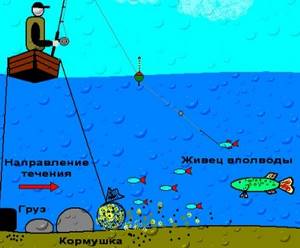
Equipment and tackle for catching pike perch on the Volga
For fishing using the described method, you first need a boat, preferably a motor one, which must be equipped with a rope halyard 70-80 m long, two reliable anchors, a cage, a landing net, a cannon with live bait and equipped with spinning rods. It is more convenient to operate several rods in an aluminum boat, but in the absence of one, PVC will do. In the “elastic band”, an angler can sit quite comfortably with three or four rods. If fishing is carried out from a rubber boat, it is preferable to use a cage made of nylon thread rather than a metal one. The landing net should be large and spacious. An incident happened to a fellow fisherman several years ago that forced him to abandon his small landing net forever. One day, one of his baits was grabbed by a huge pike perch, which did not want to appear on the surface for a long time. But when he surfaced, it became clear that the landing net was clearly too small for him, and there was a real threat of the outstanding trophy disappearing. The fisherman was not taken aback and stuck the rim of the landing net into the pike perch’s mouth. The pike perch automatically slammed it shut, digging its teeth into the nylon mesh and even in the boat did not open its jaws. The trophy pulled 7.8 kg.
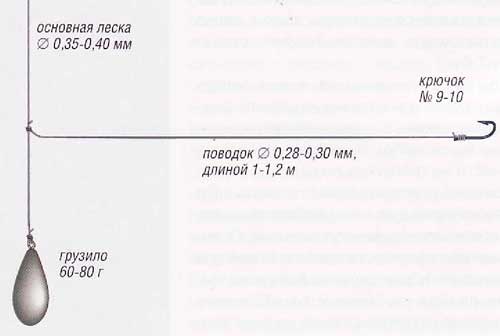
For catching predators with live bait, any, even the cheapest, fiberglass spinning rods are suitable. This choice is justified, since the tackle does not require either a casting distance or sensitive wiring. Spinning rods designed for live bait fishing must! be short, no more than 2.1 m long. Long rods are inconvenient to place on board the boat. Any reel is suitable, but if you have the skills to fish with inertial reels, then it is better to prefer them. A fishing line wound on an “inertial reel” is less susceptible to aging, and besides, it is more convenient to control tackle with a fairly thick fishing line and a heavy sinker using an inertial reel. Such reels are reliable and durable, but if handled incorrectly or carelessly, they form “beards”. If you have no experience in handling inertial coils, you can use simple inertia-free ones.
Nozzles for catching pike perch on the Volga
The best bait for catching predators is sprat. Pike-perch and bershi are excellently caught even with dead or frozen fish, but in the summer it is better to avoid frozen sprat. When the pike perch emerges from the mouths of caught predators, fresh sprat sometimes falls out in handfuls, and if you bait a hook with it, then a confident bite will follow on this equipment again. It is very difficult to catch sprat in summer. Its flocks stay in the upper layers of the water, mainly near the riverbed, and can only be caught at night, by casting wrens from a boat. In addition, it is necessary to know the places where this fish accumulates. As an alternative, you can use small bleak or sabrefish, but with the same mandatory condition: they should not be frozen.
Small bleak can be easily caught by wading with a small fish, tracking schools of fish on the surface of the water. They carefully creep up to the bleak, holding the little fish under water and trying not to make sudden movements. Having brought it under the fish, it is quickly raised to the surface. The bleak does not have sprinting qualities, but can go deep, but after a while it will again appear on the surface of the water.
It is much more difficult to chase juvenile asp, ide, chub, and dace. These fry with a slender, narrow body 45 cm long are also good for catching pike perch. In addition, they are more tenacious than bleak, and with periodic changes of water in the canna they do not fall asleep for a long time. Small roach can also be used as bait, but it is inferior to all the above-mentioned live baits both in catchability and survivability.
Live bait is caught in the late morning, around 10-11, when the water in the shallow coastal waters warms up. At this time, the fry walks in schools at a meter depth, and it is quite easy to catch them. It is only important to know when to stop. For fishing from a boat with a good bite, forty fish is enough; we always release all the survivors back.

Sometimes it is not possible to find fry in the coastal zone. In this case, we switch to catching larger live bait, up to 10 cm long. It is difficult to catch it in open water, so we have to look for some underwater objects: grass, bushes, a sunken boat. The fish we need are constantly hanging around such shelters. For large specimens it is better to provide a separate canna; if they are placed with the fry, the latter quickly fall asleep. It is best to catch live bait immediately before fishing so that the fish are alive. But if this is not possible and you need to store the fry for a long time, then it is necessary to provide a separate capacious container for them - an old bathtub or a barrel filled with river water. The fry can live in them for several days, and to prevent the fish from jumping out, the surface of the water in a barrel or bath is covered with a fry net. When fishing, large live bait is euthanized and cut along the body. Strips about 5 cm long are attached to the hooks. By the way, a whole fish attached to a hook is usually more catchy than cutting, but the predator also takes well for cutting. The fry is placed under the dorsal fin, pierced with a hook twice; cutting is also done in a similar way. It is more convenient to catch live bait in a group of fishermen, each of whom is armed with a small fish, which is a 2x1 m mesh with a 3-4 mm mesh, stretched between two poles. They work like small seines, going around the school of fry from different sides and gradually narrowing the ring. At the final stage of fishing, when the fry have huddled together in a dense group, the fishermen quickly get closer and sharply lift the fry to the surface. The caught fry are sorted: some are sent to freedom, some are sent to the cannes.
Techniques for catching pike perch on the Volga
When installing a boat, the guy line is placed in such a way that it is not located on the navigable fairway, which is a gross violation of the rules of navigation and quite dangerous for the fisherman. I have witnessed several times how barges tore fishing boats from their place, the propellers getting caught in the ropes of the guy wires. After anchoring the boat, the fishing spot and gear are prepared.
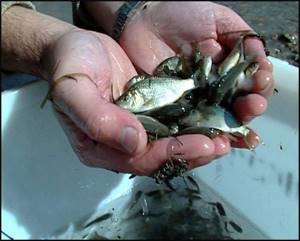
The eland with live bait is installed so that it does not tip over due to excitement or careless movement of the fisherman. Having baited the hooks, the rigs are thrown in different directions at a distance of 20-25 m from the boat. The casts are performed gently and carefully so that the live bait is not too injured when falling into the water and does not fly off the hooks. At the same time, they try to remember which rigs are equipped with live bait, and which ones are used for cutting. This is necessary in order to determine the preferences of the predator on this fishing trip. Sometimes even the type of bait matters. For example, on one fishing trip a predator bites better on small bleak, and on another - on juvenile ide or asp.
After all the equipment has been thrown, the slack in the fishing lines is selected, which is necessary for timely registration of bites. If a predator is somewhere nearby, it usually quickly reveals itself by biting. If there is a confident bite, you should not hesitate to hook, since in most cases the pike perch hooks itself on a sharp hook, swallowing it very deeply. The tip of the rod first shudders sharply, and then begins to tremble intermittently, sometimes even the spinning rod “knocks” on the side of the boat. The bursh usually hangs on the bait, so its bite manifests itself as a smooth swaying of the rod tip. If a catfish takes the bait, then the spinning rod bends smoothly and monotonously towards the water. Pike usually confidently takes the bait, swallowing the hook deeply, so they often cut the line with sharp teeth. Weak bites are manifested by slight vibrations in the tip of the spinning rod. They can stop and resume again, so patience, endurance and a “sense of gear” are required from the angler. Feeling that the time has come, immediately and sharply hook, otherwise the trophy may be missed. Large pike perch in most cases take bait very carefully. When fishing, the angler will need a yoke and a medical clamp to remove the hook from the mouth of the pike perch. Catching a predator with live bait is most successful when there is a current of medium strength, which straightens the long leashes of the rigs, oscillates the bait, giving it a more attractive appearance. Successful fishing is also accompanied by stable weather with a weak south or south-west wind.
Autumn fishing on the Volga is considered one of the most productive among fishermen.
How to catch pike on the Volga
Pike fishing gear
Pike fishing on the Volga is good in the cool season; in summer the pike is a little bit fishy and to catch it you will have to use the best pike tackle. More often in the summer they catch pike not on the river itself, but in lakes and eriks, near thickets of grass.
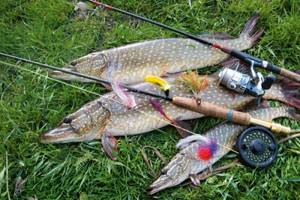
Therefore, when choosing gear for catching pike on the Volga, choose a rod 2.7 meters long with a test weight of 10-30 g; it is advisable to choose a medium-fast action for pike, this will allow you to catch pike with both floating wobblers and jig baits. A reel for pike fishing is suitable for a spinning reel of the 3000 series. A metal leash is required when fishing so as not to lose your favorite wobblers and spinners when fishing for pike. Of course, to catch pike on the Volga, use strong and elastic braid with a diameter of up to 0.13 mm.
The best lures for pike fishing on the Volga
The best lures for pike are floating wobblers with a diving depth of up to 3 meters and a size of up to 13 cm. In lakes overgrown with grass, you can use poppers and spinnerbaits. Slugs and Texas rigs work well on toadstools. You can use non-snagging Rapala Minnow Spoon spinners, as well as Mepps and Daiwa spinners converted to non-snagging spinners. Homemade non-hook fishing gear is a vivid example when DIY fishing gear gives tangible results when fishing in the grass.
Fishing on the Volga should certainly please you with trophies. We suggested what fishing gear for fishing on the Volga in the summer can be used to catch various fish, what baits fish on the Volga bite best, what kind of fish and how to catch... The rest depends on your fishing skills and fishing luck. Have fun fishing on the Volga and have the necessary gear at hand!
Fishing on the Volga
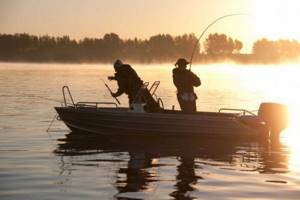
The Volga is one of the ten largest rivers on our planet. The area around it fascinates with its colorful landscapes, its high shores alternate with cozy beaches, and the air here is as clean as mountain air. This is why fishing on the Volga is so popular during the warm season.
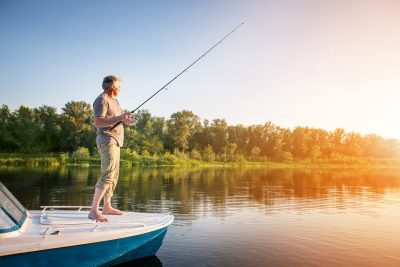
For fishermen, this is also a kind of Mecca. In the summer there are a lot of them here, and everyone is trying to catch something. Underwater inhabitants, in turn, adapt as best they can to fishing pressure. They are becoming more careful, avoiding crowded places, so today it is not as easy to catch fish on this great river as it was 15-20 years ago. And yet, with some luck, these days you can also catch a large Volga catfish or carp. The main thing is to be in the right place at the right time.
Fishing in the lower reaches of the Volga is a tradition
Every year I go with my friends to the Volga Delta. Here we meet comrades and brothers in our favorite weapons. The first day is a barbecue, a fire and, of course, everyone’s favorite stories, but the most important thing is fish soup. Fish soup from carp and pike perch, that’s what every fisherman dreams of.
Upon arrival, no one takes spinning rods at first, as everyone is tired from the long journey, but the next day the real fishing begins!
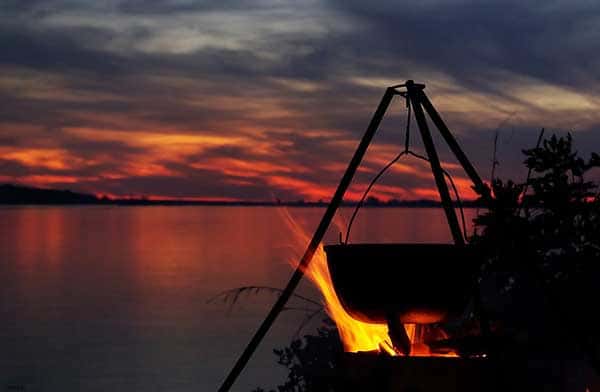
The sun is still so low that the body chills to the bones, and the low temperature makes you instantly wake up. Silence, only a small splash of some kind of fish can be seen in the distance.
We launch the boat into the water. The glass has to be cleaned of a decent layer of frost. In autumn, every morning is the same, and today was no exception. Finally the whole team is in full force, we can go fishing!
Fishing Travel Club. Fishing on the Lower Volga. Spring (Video)
Where to fish on the Lower and Upper Volga?
Two regions are very promising in terms of fishing - Astrakhan and Tver. Only on the territory of the latter there are as many as 4 reservoirs rich in fish stocks. Let's start with it. On the upper Volga (Verkhovolzhye), as this area has been called since time immemorial, the river stretches for as much as 700 kilometers. In this area, one and a half hundred tributaries flow into it, in addition, there are about 1,500 large and small lakes, but the largest number of fishermen gather on the banks of the Volga itself.
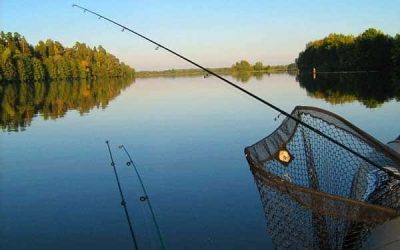
What can you catch in the Tver region? Almost all types of freshwater fish are caught. Both peaceful ones - from miniature tops to decent-sized carp, and ferocious predators - perches, pike perch, pike, burbot, catfish. Roach and sabrefish are not found often; only local residents know where they are located. They secretly say that even sterlet and sturgeon, which are rare in our time, visit the Upper Volga. Even less often, but still, you come across a beluga that cannot be caught with ordinary tackle.
Fishing bases in the Tver region
The list of fishing bases in this region is large. These include the places where medium and small rivers flow into the Volga, such as Tvertsa, Dubna, Medveditsa, Shosha, Kashinka or Poved. Lakes Seliger, Verestovo and Velikoye are no less popular. On their calm banks, fishermen feel more comfortable, and there are no less fish in them than in the river itself. For example, pike prefers to hunt for small fish in lake thickets rather than in open water. You can set up in your own tent and fish for several days, or settle in one of the tourist complexes with good conditions and devote even more time to the fishing process. Some revered establishments like the Shore of Dreams or the Alexander Pier always have a lot of guests in the summer, so it is advisable to book rooms in advance.
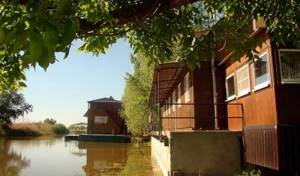
A good option for relaxation and wonderful fishing on the Volga would be the River Club hotel complex, located on a peninsula near Konakovo. Here you will find everything you need for both: comfortable gazebos, children's playgrounds, barbecues for preparing caught fish, watercraft and high-quality equipment for rent, huntsman assistance to beginners in finding a fishing spot and mastering various fishing techniques.
Tver reservoirs are famous for excellent fishing. At Rybinsk you will need a boat with a powerful engine, after all, 4500 sq. km is no joke! Uglich is more modest, but it has excellent bream fishing. Fishermen also praise the Vyshnevolotsk Reservoir, which is home to many river species, in particular perch, pike, roach, rudd and others.
Cool places in the Astrakhan region
In the Astrakhan region there are no less “cool spots” where you can go as a savage. First of all, I would like to note the Enotaevskaya Spit with its depths and underwater spits. This place is chosen by lovers of classic spinning fishing and trolling for the exciting fishing for pike perch and the high probability of catching the owner of the river - trophy catfish.
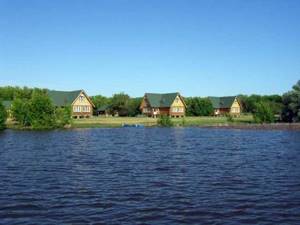
About 10 kilometers downstream, near Seroglazka, a sandy island rises in the middle of the river, on one side of which there is a very promising spit in the water. The depth above it does not exceed 3 meters, but this is quite suitable for the asp, which feeds here throughout the warm season. There are also a lot of hungry perches here, ready to attack baits almost the same size as themselves. In general, the spinner has plenty of room to roam.
If you go even further downstream, to the picturesque Shambaysky Island, you can find several interesting areas with so-called return lines, where various types of linen are well taken, carp and decent catfish are found. By the way, it is preferable to catch the latter here with a quok. It is not surprising that there are always a lot of fishing tents on the island itself and on the river bank opposite. Sometimes there are so many that from a great height they can be mistaken for a village.
Near a small settlement called Rechnoe, at a distance of 3 kilometers, there was a series of deep holes with whirlpools. There is no better place to catch trophies. Local fishermen just smile as they watch the visitors squinting under the shore with spinning rods. They have never done such nonsense; in their understanding, fishing is mustachioed giants weighing over 50 kg!
Another wonderful place in the Astrakhan region is Erik Shchuchy. Especially its exit into the riverbed with step-shaped dumps from 3 to 10 meters. Fish certainly like this type of relief, but it causes certain problems for fishermen. And yet, the loss of one or two rigs is worth it to put a hefty pike or several pike perch in the tank. Bersh, which has recently become very rare, is also caught here. The depth of the riverbed itself is approximately 20 meters. One can only imagine what “monsters” swim in this river abyss.
Arguments in favor
Among fishermen there are both ardent supporters and no less staunch opponents of fishing in the lower reaches of the Great Russian River. Citizens belonging to the first category are ready to travel to the Astrakhan region several times a year. Others, on the contrary, will not go there even at gunpoint. But there are, however, those who take a neutral position.
To be honest, ten years ago I was rather skeptical about a trip to the lower Volga. Probably the reason for this was the already fairly boring videos and articles in magazines about fishing in this region. At that time, everything seemed monotonous and simple to the point of disgrace - they say, no matter what you throw at it, you’ll catch it.
But, with the expansion of my fishing geography, I ended up here. Which I still don’t regret. And fishing in the Astrakhan region no longer seems so banal to me, because if you look into it, almost every angler here will be able to do exactly the fishing that is closest to him - be it pike perch on a jig from a boat, asp on the rifts, perch on streams, pike in erikah, rudd on the peals... We can continue for a long time! Fishing conditions are really very different, and, therefore, the approaches and the set of baits and tackle are different.
True, of course, it’s worth saying that in most cases, I fish on the lower Volga in early spring, due to the fact that, having been hungry for the winter (I haven’t fished with a spinning rod in the winter for a long time), I can’t wait to get out on the water and bask in the spring sun and test out new baits that appeared over the winter. I have been to these parts both in summer and autumn. But, firstly, I can’t stand the heat at all (although I know many people go to Astrakhan in July - August, when it’s +40 in the shade), and, secondly, there are other places I want to visit at this time. Therefore, the lower reaches of the Volga, at this point in time, are almost exclusively early spring for me.
As a rule, I travel to the Volga section from Volgograd to Astrakhan. I rarely get to the rumbles; I prefer fishing with a jig from a boat.
What gear should you take?
It all depends on what the angler is targeting. If you travel with your family and spend more time barbecuing than fishing, then you can get by with just fishing rods. There are enough of them to catch bleak, roach, rudd or small perch chasing fry in the coastal grass. For fishing for silver bream and white bream, it is better to use more advanced versions of float tackle - lapdog or matcha. You can simply find a relatively calm place and wade fish with a long fly rod, not forgetting to throw bait mixed with clay into the water.

Happy owners of boats with a motor can be advised to fish using the nodding method. There are a lot of catfish in the Volga, and quok is one of the most effective tools for catching them. In addition to this, you will need a short 2-meter fishing rod made of high-quality material with a lower weight of at least 200 g, a reliable multiplier reel and a cord that can withstand a load of at least 25 kg. Special Kevlar gloves and a strong hook will also help. Who knows what kind of fish will grab the bait.
Don’t want to continuously “gurgle” your quok through the water? Then the best option for the lazy is trolling. In this way, Volga catfish are provoked to bite with deep-sea wobblers that dive to 8-10 meters. When trolling, it is important to consider one point: the thinner the braid, the deeper the bait goes in a fast current. On the one hand, this seems to be good, but on the other, it’s not very good, because if a huge catfish bites, the thin cord may not be able to withstand it.
To catch predators by casting, you can use a light class rod with a test range of 10-20g. It is equipped with a corresponding inertia-free (2000-2500) and a cord with a diameter of 0.1-0.12 mm. With such gear, you can successfully catch perch, pike perch, pike, ide, asp, using almost all types of spinning baits, depending on the fishing object: spoons, spinners, jigs, classic wobblers and their various “exotic” varieties.
The current on the Volga is swift, so you need to take strong tackle that can throw feeders weighing up to 250 g and withstand the jerks of resisting prey.

